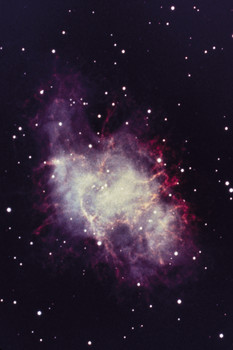|
 Backyard stargazing introduces the whole family to a much bigger universe Backyard stargazing introduces the whole family to a much bigger universe
On a clear winter night, the sky over your own backyard comes alive with a special kind of magic. Overhead, uncounted billions of stars, planets, and satellites swirl, creating a heavenly light show that changes every night, and it's one the entire family can share.
Gas guzzlers: when great galaxies gobble gobs of matter, new stars are born
Young galaxies grow by making lots of new stars. Those stars begin to form when diffuse gas collects into clouds; eventually the clouds collapse under their own weight, and their cores become hot and dense enough to ignite nuclear fusion. So if you spot a galaxy whose mass is mostly interstellar gas, it's probably still young and still growing rapidly; in billions of years, as the galaxy passes through adolescence and into maturity, it will consume nearby gas clouds while its star population proliferates.
Between the Galaxies
In the grand tally of cosmic constituents, galaxies are what typically get counted. Last time I checked, the universe contained a hundred billion of them. Bright and beautiful and packed with stars, galaxies decorate the void of space like cities across the landscape at night. But just how voidy is the void of space? (How empty is the countryside between cities?) The in-your-face splendor of galaxies may persuade you that nothing else matters. But the universe is teeming with hard-to-detect things that may be more interesting, or more important to the evolution of the universe, than the galaxies themselves.
Send in the clouds: the lives of molecules in space
For nearly all of the first 400 millennia after the birth of the universe, space was a hot stew of fast-moving, naked atomic nuclei with no electrons to call their own. The simplest chemical reactions were still just a distant dream, and the earliest stirrings of life on Earth lay 10 billion years in the future.
Exploring the Universe with Dr. Norio Kaifu
During 1998 we were fortunate to attend a dinner hosted by the Japanese Chamber of Commerce and Industry of Hawaii, featuring a lecture by Dr. Norio Kaifu. Professor Kaifu is the director of the Subaru Telescope, National Astronomical Observatory of Japan (NAOJ) and has held the position as vice president of the International Astronomical Union (IAU) since 1997.
The Difference between Types I and II Supernovae
Type I supernovae consist of explosions of white dwarf stars composed primarily of oxygen and carbon. The white dwarf absorbs the mass of a colliding nearby neutron star to increase to a mass of 1.4 times our sun. Ensuing density and temperature conditions result in the carbon beginning to burn explosively.
The Hitchhiker's Guide to Elliptical Galaxies
Elliptical galaxies are ellipsoidal agglomerations of stars, which usually do not contain much interstellar matter, and look smoothly like small wads when viewed through a telescope.
Finding the forest despite the trees: two new galaxies, hidden among, the stars
About fifteen years ago, a group of leading astronomers judged that the time was right for a new map of the sky. The map would tap revolutionary techniques and technology, including electronic cameras that collect light far faster than photographic film; computerized telescopes that aim and capture images supereffectively; and global computer networks that process, analyze, and store massive amounts of data.
Astronomers spy familiar planetary system
The planetary system--actually a pair of planets--orbits 47 Ursae Majoris, a sunlike star that lies just 51 light-years from Earth and is visible to the naked eye. Both planets, like most in our solar system, have nearly circular orbits. Moreover, the location and mass of the outer planet is similar to that of Jupiter in our solar system. |




